When it comes to ensuring the safety of a building’s occupants, one crucial aspect is making sure that the doors are fire-rated. Fire-rated doors are specifically designed to withstand heat and resist burning for a certain period, preventing the spread of fire and smoke between different areas of a structure. Identifying whether a door is fire-rated is essential for compliance with safety regulations and for providing peace of mind.
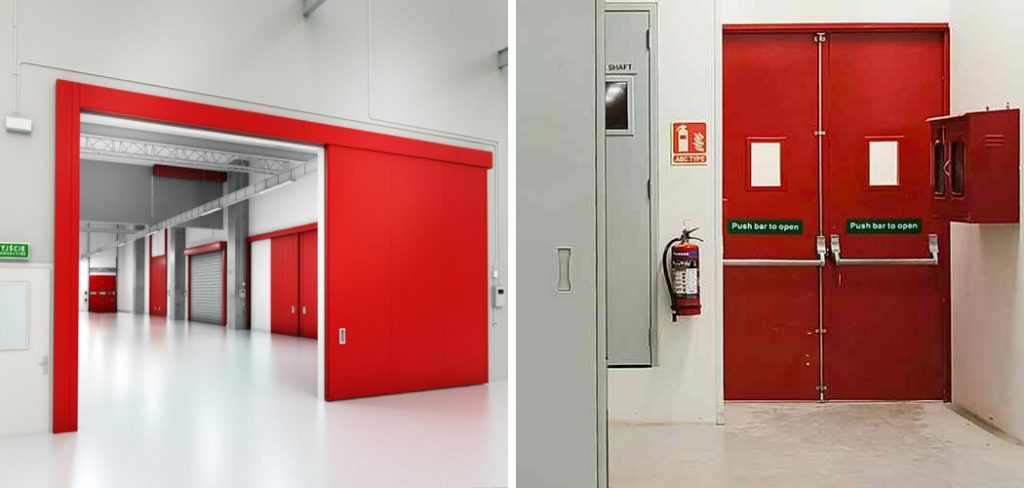
In this guide on how to tell if door is fire rated, we will explore the key characteristics and markers that can help you determine if a door is fire-rated, ensuring that you can take the necessary steps to protect your property and its inhabitants.
What is a Fire-Rated Door?
A fire-rated door is a specially constructed door that has been tested and certified to withstand exposure to fire for a certain amount of time. The length of time that a door can resist heat and flames varies, depending on the specific needs of the building. These doors are commonly found in commercial buildings, high-rise structures, and multi-family dwellings.
Fire-rated doors are an essential component of any fire protection system as they act as barriers against the spread of fire and smoke. They are typically installed in areas where there is a high risk of fire or where it is crucial to keep flames contained, such as stairwells, elevator shafts, and corridors.
Why is it Important to Identify if a Door is Fire-Rated?
Knowing whether a door is fire-rated or not can be critical in an emergency situation. Fire-rated doors are designed to withstand extreme heat and can provide valuable time for occupants to evacuate safely. They also help prevent the spread of fire and smoke, giving firefighters more time to contain the blaze.
Additionally, building codes and regulations often require certain types of buildings to have fire-rated doors installed in specific areas. If a non-fire-rated door is mistakenly installed in these locations, it could result in fines or penalties for the property owner.
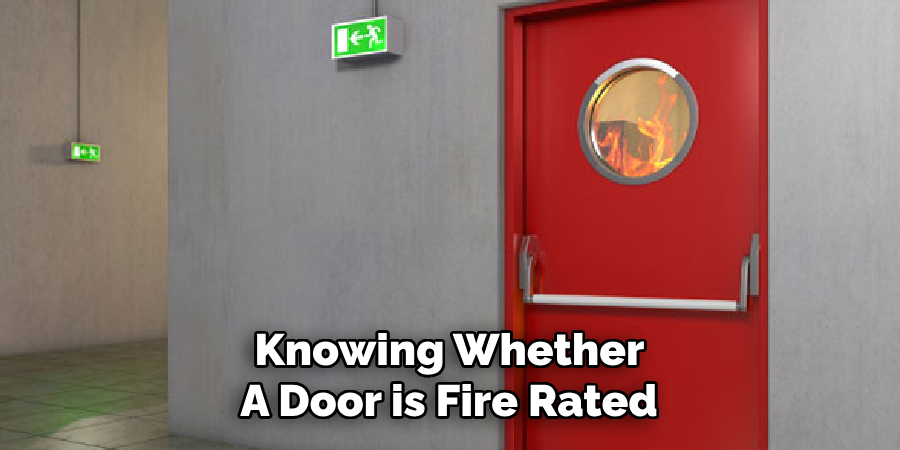
8 Step-by-step Guidelines on How to Tell if Door is Fire Rated
Step 1: Check the Label or Certification Stamp
The most straightforward way to determine if a door is fire-rated is to look for a label or certification stamp. Fire-rated doors typically have a permanent label or plate that indicates their fire rating. This label is often located on the hinge side or the top edge of the door.
It will display critical information such as the manufacturer’s name, testing lab, fire rating (e.g., 20, 45, 60, or 90 minutes), and the standard to which the door has been tested (e.g., UL 10B, NFPA 252, or ASTM E2074). Checking this label or stamp is a reliable first step in identifying a fire-rated door.
Step 2: Look for a Solid Core
Another indicator of a fire-rated door is its construction. Fire-rated doors are typically made with a solid core, which means they are not hollow or filled with insulation material. This solid core helps the door withstand intense heat and flames, providing more significant protection compared to hollow doors.
To determine if a door has a solid core, try knocking on it with your knuckles. If you hear a solid thud rather than an echo or hollow sound, it is likely that the door has a solid core and may be fire-rated.
Step 3: Check for Intumescent Seals
Intumescent seals are specialized strips or gaskets that expand when exposed to heat, creating a barrier between the door and frame. These seals play a crucial role in preventing fire and smoke from spreading through gaps around the door.
To identify if a door has intumescent seals, look for rubber strips or gaskets on the edge of the door where it meets the frame. These may be visible when the door is open or hidden within a pocket in the frame.
Step 4: Inspect the Door Hardware
Fire-rated doors often come with specific hardware that is designed to maintain the door’s integrity during a fire. This includes components such as hinges, door closers, and latches that are made from materials capable of withstanding high temperatures.
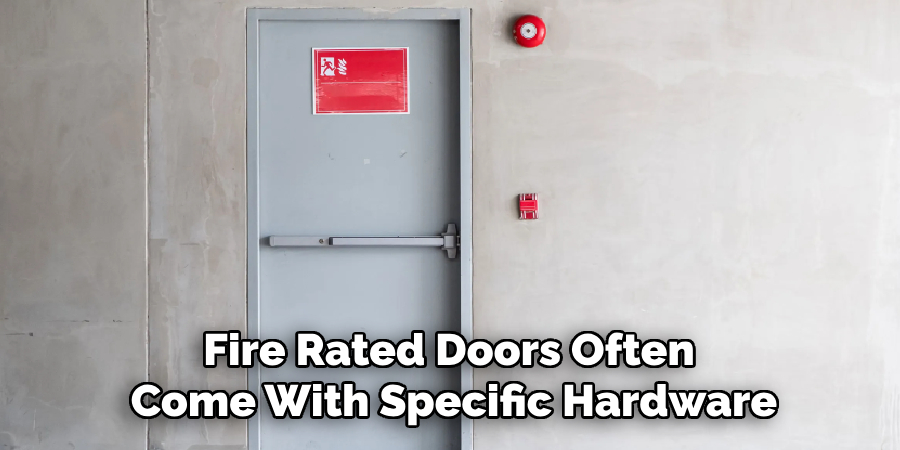
First, examine the hinges: fire-rated door hinges are typically made of steel and might have ball bearings to prevent them from warping in heat. Next, check for a door closer, which helps ensure the door automatically shuts to contain the fire and smoke. Door closers on fire-rated doors are usually heavy-duty and have an adjustable spring mechanism. Finally, look at the latch or lock on the door; these should also be made of fire-resistant materials.
Step 5: Look for Fire-Rated Glass
Fire-rated doors that have windows or glass panels will also have a fire rating. The glass used in these doors is specifically designed to resist heat and flames for a particular amount of time, just like the door itself. Fire-rated glass is often marked with safety ratings such as “20-minute” or “45-minute.”
If there are any markings indicating that the glass is fire-rated, it is likely that the entire door has been tested and certified as well.
Step 6: Check the Door Frame
The door frame is just as important as the door itself when it comes to fire protection. Fire-rated doors are typically installed in frames made of noncombustible materials, such as metal or steel. These frames are also equipped with intumescent seals and have special reinforcement around the hinges and latch area.
Inspecting the door frame for these characteristics can help confirm if a door is fire-rated or not.
Step 7: Be Aware of Draft Strips
Draft strips are another type of seal that may be used on fire-rated doors, particularly those in exterior walls or high-rise buildings. These strips are usually made of metal and help prevent air from being drawn into the building, which can fuel a fire.
Check for draft strips along the edges of the door frame to determine if a door is fire-rated.
Step 8: Consult an Expert
If you are still unsure whether a door is fire-rated after following these steps, it is best to consult an expert. Fire protection professionals have the knowledge and experience to identify fire-rated doors and recommend any necessary actions. It’s always better to be safe than sorry when it comes to protecting your property against potential fires. Additionally, they can provide guidance on maintenance and inspections to keep fire-rated doors in proper working condition. Overall, consulting an expert is a great way to ensure the safety and compliance of your building’s fire protection systems.
Following these guidelines on how to tell if door is fire rated can help you determine if a door is fire-rated and ensure that your building meets safety regulations. Remember, fire-rated doors play an essential role in protecting lives and property during emergency situations. Regular maintenance and inspections are crucial to ensuring the effectiveness of these doors, so be sure to schedule them regularly with a trusted professional.
Additional Tips
Tip 1: Regularly Test Door Functionality
Ensuring that fire-rated doors function properly is crucial. Periodically test the door’s closers and latches to make sure they operate smoothly and effectively. A malfunctioning door closer or latch can compromise the door’s ability to contain a fire.
Tip 2: Keep Doors Closed
Fire-rated doors are designed to limit the spread of fire and smoke when closed. It is essential to keep these doors closed at all times unless they are equipped with an automatic closing mechanism that activates in case of a fire.
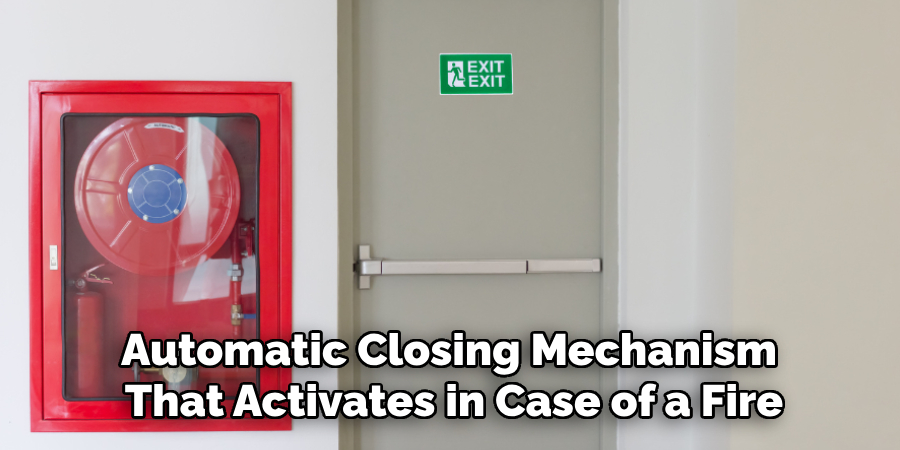
Tip 3: Avoid Door Modifications
Modifying a fire-rated door, such as drilling holes or installing non-approved hardware, can compromise its integrity. Always use hardware and make modifications that are certified and approved for use with fire-rated doors to ensure compliance with safety standards.
Tip 4: Educate Building Occupants
Educate the occupants of the building about the importance of fire-rated doors. Inform them about the role these doors play in fire safety and encourage them not to tamper with or prop open the doors.
Tip 5: Schedule Professional Inspections
Consider having professional inspections of your fire-rated doors at least annually. Fire protection experts can thoroughly examine the doors and frames, ensuring that they comply with the relevant fire safety standards and regulations.
Tip 6: Monitor Changes in Building Usage
If the building’s usage changes, such as a renovation or change in tenant, reassess the fire-rated doors. New configurations or uses might require different fire protection measures. Ensure that any new requirements are met.
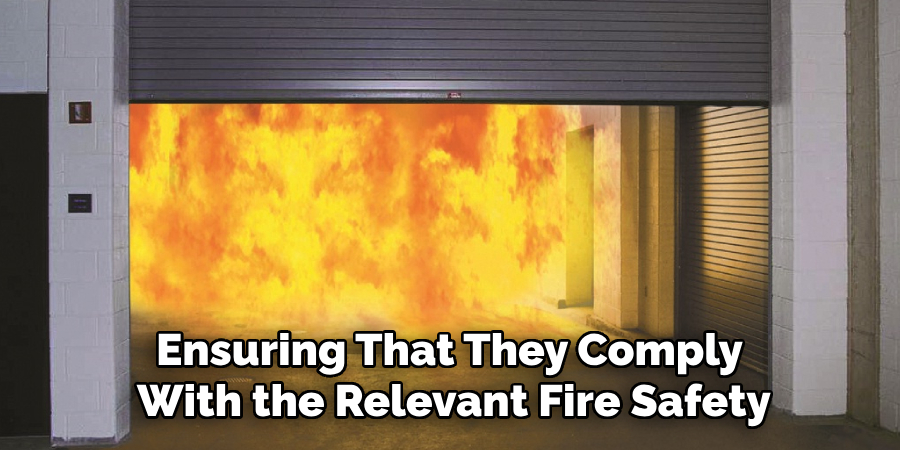
Following these additional tips will help maintain the integrity and effectiveness of your fire-rated doors, enhancing the overall fire safety of your building.
Frequently Asked Questions
Q: Are All Doors Required to Be Fire-rated?
A: No, not all doors are required to be fire-rated. Fire-rated doors are typically only needed in certain areas of a building, such as stairwells, fire exits, and openings between different occupancy types. Local building codes and regulations will specify where fire-rated doors are necessary.
Q: How Often Should Fire-Rated Doors Be Inspected?
A: Fire-rated doors should be inspected at least annually by a qualified professional. However, it is recommended to have them checked more frequently for high-traffic areas or buildings with particular hazards that could impact the door’s functionality.
Q: Can I Install a Fire-Rated Door Myself?
A: No, fire-rated doors should only be installed by professionals who are familiar with the local building codes and installation requirements. Improper installation can compromise the door’s fire rating, putting lives and property at risk in the event of a fire.
Q: Are There Different Levels of Fire Ratings for Doors?
A: Yes, there are different levels of fire ratings for doors. These ratings typically range from 20 minutes to 3 hours, indicating how long the door can withstand heat and flames before it fails. The specific rating required will depend on the location and intended use of the door.

Conclusion
Identifying whether a door is fire-rated or not is crucial for the safety of building occupants and ensuring compliance with regulations. By following these step-by-step guidelines on how to tell if door is fire rated, you can accurately determine if a door is fire-rated and take any necessary measures to maintain its effectiveness as part of your building’s overall fire protection system. Remember that when in doubt, it is always best to consult a professional for expert advice. Stay informed and stay safe!
About
Safety Fic is a distinguished figure in the world of Diy design, with a decade of expertise creating innovative and sustainable Diy solutions. His professional focus lies in merging traditional craftsmanship with modern manufacturing techniques, fostering designs that are both practical and environmentally conscious. As the author of diy, Safety Fic delves into the art and science of Safety Fic-making, inspiring artisans and industry professionals alike.
Education RMIT University
(Melbourne, Australia) Associate Degree in Design (Safety Fic) Focus on sustainable design, industry-driven projects, and practical craftsmanship. Gained hands-on experience with traditional and digital manufacturing tools, such as CAD and CNC software.
Nottingham Trent University
(United Kingdom) Bachelor’s in diyfastly.com and Product Design (Honors) Specialized in product design with a focus on blending creativity with production techniques. Participated in industry projects, working with companies like John Lewis and Vitsoe to gain real-world insights.
Publications and Impact
In diy, Safety Fic his insights on indoor design processes, materials, and strategies for efficient production. His writing bridges the gap between artisan knowledge and modern industry needs, making it a must-read for both budding designers and seasoned professionals.
